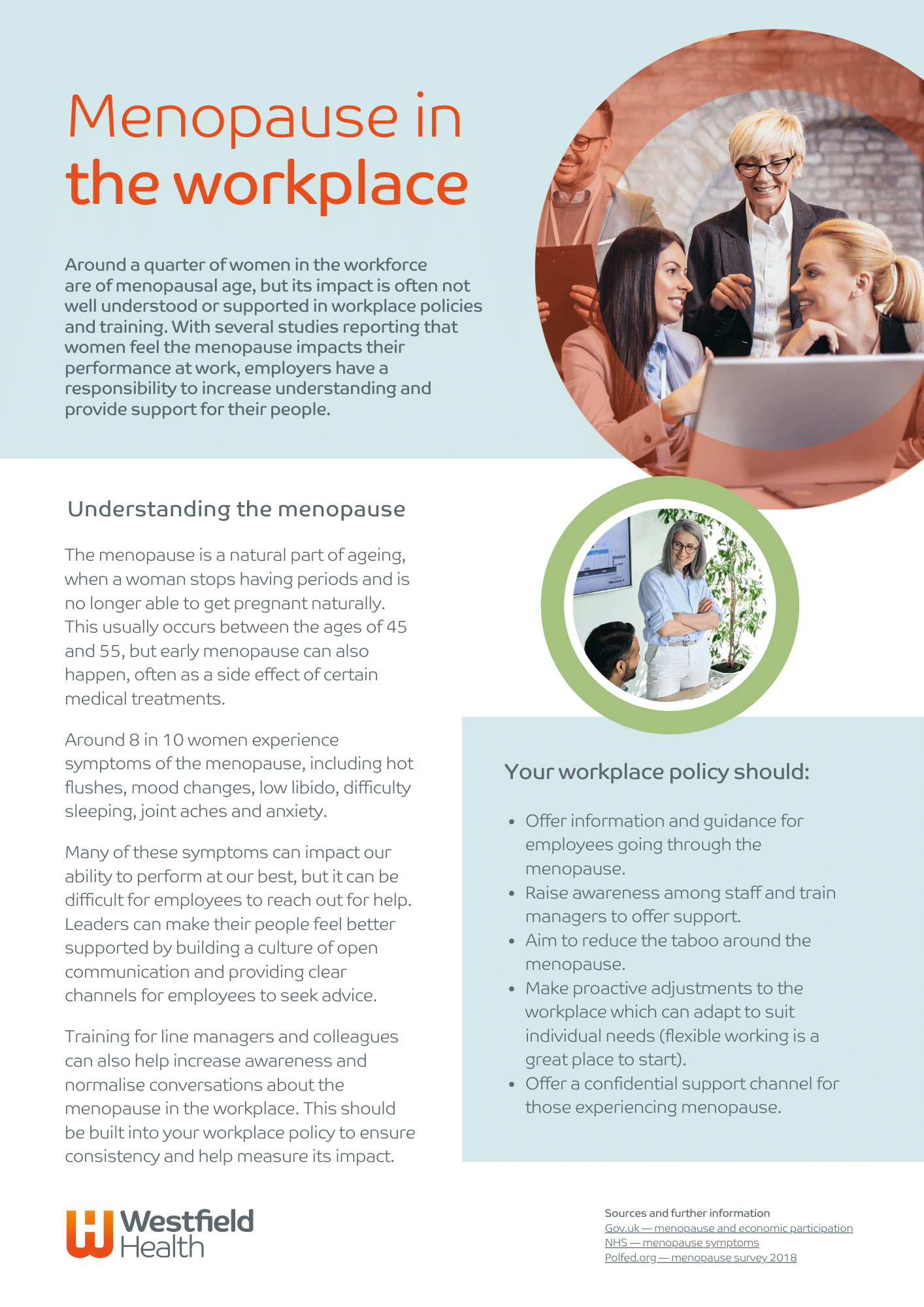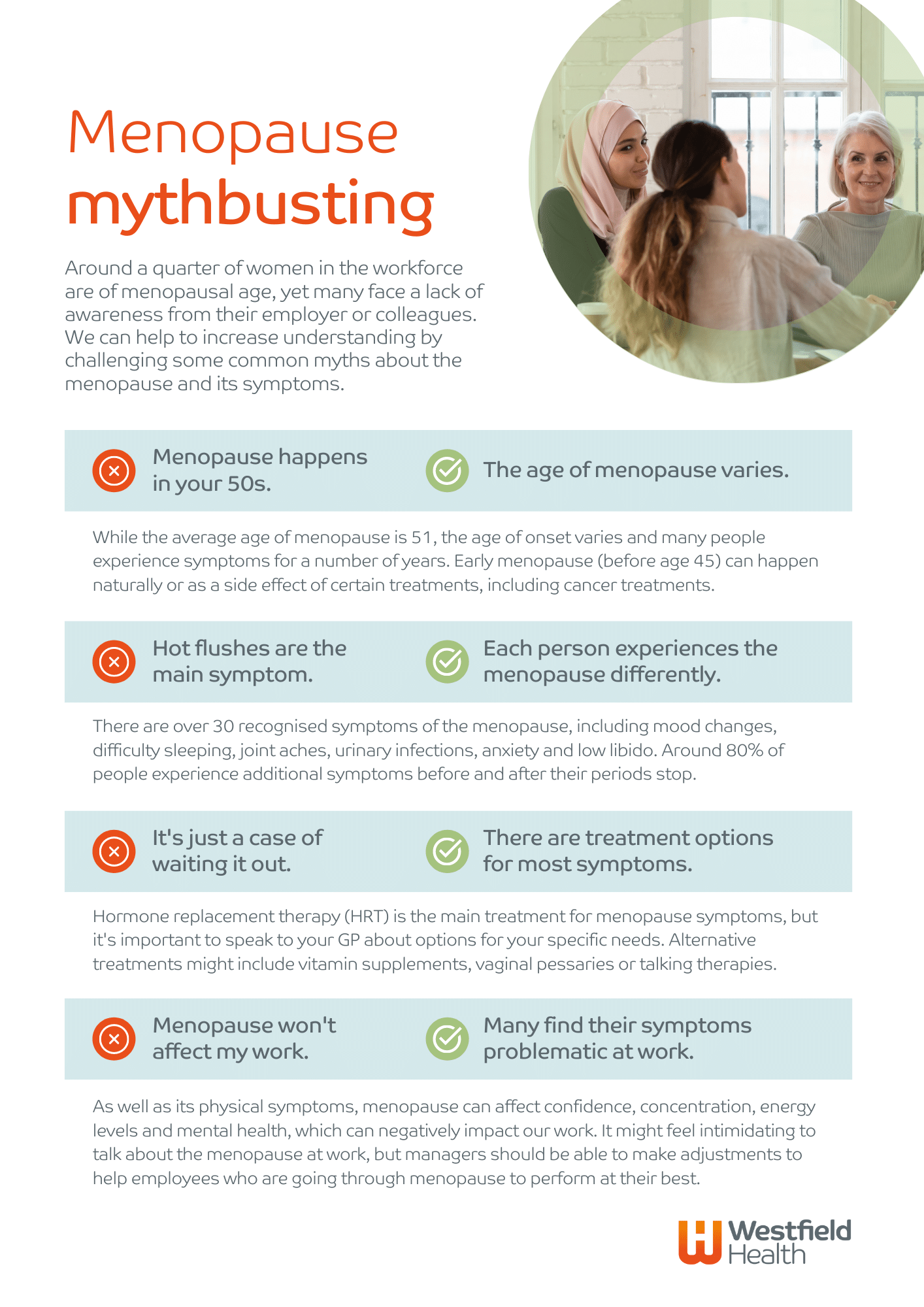Around a quarter of women in the workforce are of menopausal age, but its impact is often not well understood or supported in workplace policies and training. With several studies reporting that women feel the menopause impacts their performance at work, employers have a responsibility to increase understanding and provide support for their people.
Employees will see the most benefit from policy and culture changes, but managers and colleagues alike can help to increase understanding by challenging some common myths about the menopause and its symptoms.
Our menopause support resources can help you get started, or you can download the advice from this blog as fact sheets below:
Understanding the menopause
The menopause is a natural part of ageing, when a woman stops having periods and is no longer able to get pregnant naturally. This usually occurs between the ages of 45 and 55, but early menopause can also happen, often as a side effect of certain medical treatments.
Around 8 in 10 women experience symptoms of the menopause, including hot flushes, mood changes, low libido, difficulty sleeping, joint aches and anxiety.
Many of these symptoms can impact our ability to perform at our best, but it can be difficult for employees to reach out for help. Leaders can make their people feel better supported by building a culture of open communication and providing clear channels for employees to seek advice.
Training for line managers and colleagues can also help increase awareness and normalise conversations about the menopause in the workplace. This should be built into your workplace policy to ensure consistency and help measure its impact.
Menopause mythbusting
Myth: Menopause happens in your 50s.
Fact: The age of menopause varies.
While the average age of menopause is 51, the age of onset varies and many people experience symptoms for a number of years. Early menopause (before age 45) can happen naturally or as a side effect of certain treatments, including cancer treatments.
Myth: Hot flushes are the main symptom.
Fact: Each person experiences the menopause differently.
There are over 30 recognised symptoms of the menopause, including mood changes, difficulty sleeping, joint aches, urinary infections, anxiety and low libido. Around 80% of people experience additional symptoms before and after their periods stop.
Myth: It’s just a case of waiting it out.
Fact: There are treatment options for most symptoms.
Hormone replacement therapy (HRT) is the main treatment for menopause symptoms, but it’s important to speak to your GP about options for your specific needs. Alternative treatments might include vitamin supplements, vaginal pessaries or talking therapies.
Myth: Menopause won’t affect my work.
Fact: Many find their symptoms problematic at work.
As well as its physical symptoms, menopause can affect confidence, concentration, energy levels and mental health, which can negatively impact our work. It might feel intimidating to talk about the menopause at work, but managers should be able to make adjustments to help employees who are going through menopause to perform at their best.
Quick tips for your workplace menopause policy
It’s important to embed any changes in a workplace policy which promotes proactive menopause support and open conversations across the business. Your policy should aim to:
- Offer information and guidance for employees going through the menopause.
- Raise awareness among staff and train managers to offer support.
- Aim to reduce the taboo around the menopause.
- Make proactive adjustments to the workplace which can adapt to suit individual needs (flexible working is a great place to start).
- Offer a confidential support channel for those experiencing menopause.
Watch our free webinar on menopause in the workplace
In this webinar, our expert panel discuss how the menopause can affect employees and why it’s so important to raise awareness around the topic. You’ll receive practical advice for raising awareness within the workforce and find out ways to support and empower your people.

